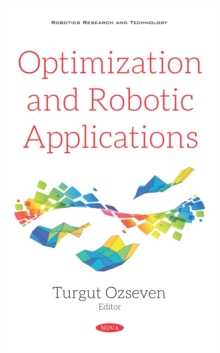
Playing and Learning Using Robotics among University Students PDF
Edited by Ruzan Galstyan-Sargsyan
Part of the Robotics Research and Technology series
Description
The arrival of the 21st century has completed an authentic technological revolution of the information and knowledge systems where education plays an essential role.
Labour market trends suggest that technological knowledge will be crucial for 80% of workers and that the qualifications necessary to enter the labour market in 2020 will be measured by technological competences.
From this perspective, educational systems are challenged to redefine their education models to connect the acquisition of scientific-technological competences to the development of creativity and innovation.
This challenge implies the need to introduce new methodologies and educational tools and new types of multidisciplinary teaching activities at the service of a global learning project.
Robotics is a resource that can be implemented in this field of education.
This book aims to show the relevance that educational robotics has had, has and will have in education.
This book provides a bibliographic review of the importance of robotics and presents real cases of the use of educational robotics in different teaching areas such as engineering and architecture degrees, or people with special educational needs.
Besides, the book also focuses on active methodologies, STEAM learning (Science, Technology, Engineering, Arts and Mathematics) or interactive platforms in the field of educational robotics.
This book presents nine chapters, which develop different case studies.
These examples have been teaching taught in different engineering areas of different universities of the world.
Chapter 1 shows an intervention proposal in which active methodologies are introduced through educational robotics.
Chapter 2 explores the capacity of robotics, focused on autonomous navigation in order to teach mathematics.
Chapter 3 shows an inspiring and motivating application ins the development of an artificial hand, that can be raised as the practical work of a final project that implies the integration of knowledge regarding mechanical design and control of dynamical systems.
Chapter 4 explains the development of a new educational platform based on the Matlab-Simulink package for teaching robotics using the Lego EV3 platform.
The fifth chapter constitutes an example of computational thinking, building a proposal based on low- cost materials, but allowing the integration and programming of sensors and, minimizing budget using open source hardware and software based on Arduino and Scratch for Arduino (S4A).
Chapter 6 develops a study of the different techniques related to robotics to work with students with different special educational needs such as ADHD, Autism, Asperger and high capacity to support their learning.
In the chapter 7, a review of STEAM learning is developed showing the potential of these tools.
Chapter 8 Finally, in Chapter 8the last chapter, the integration of technologies in all areas of people's lives is considered, showing as example the use of video.
Information
-
Download - Immediately Available
- Format:PDF
- Pages:136 pages
- Publisher:Nova Science Publishers, Inc.
- Publication Date:16/10/2019
- Category:
- ISBN:9781536162707
Information
-
Download - Immediately Available
- Format:PDF
- Pages:136 pages
- Publisher:Nova Science Publishers, Inc.
- Publication Date:16/10/2019
- Category:
- ISBN:9781536162707










